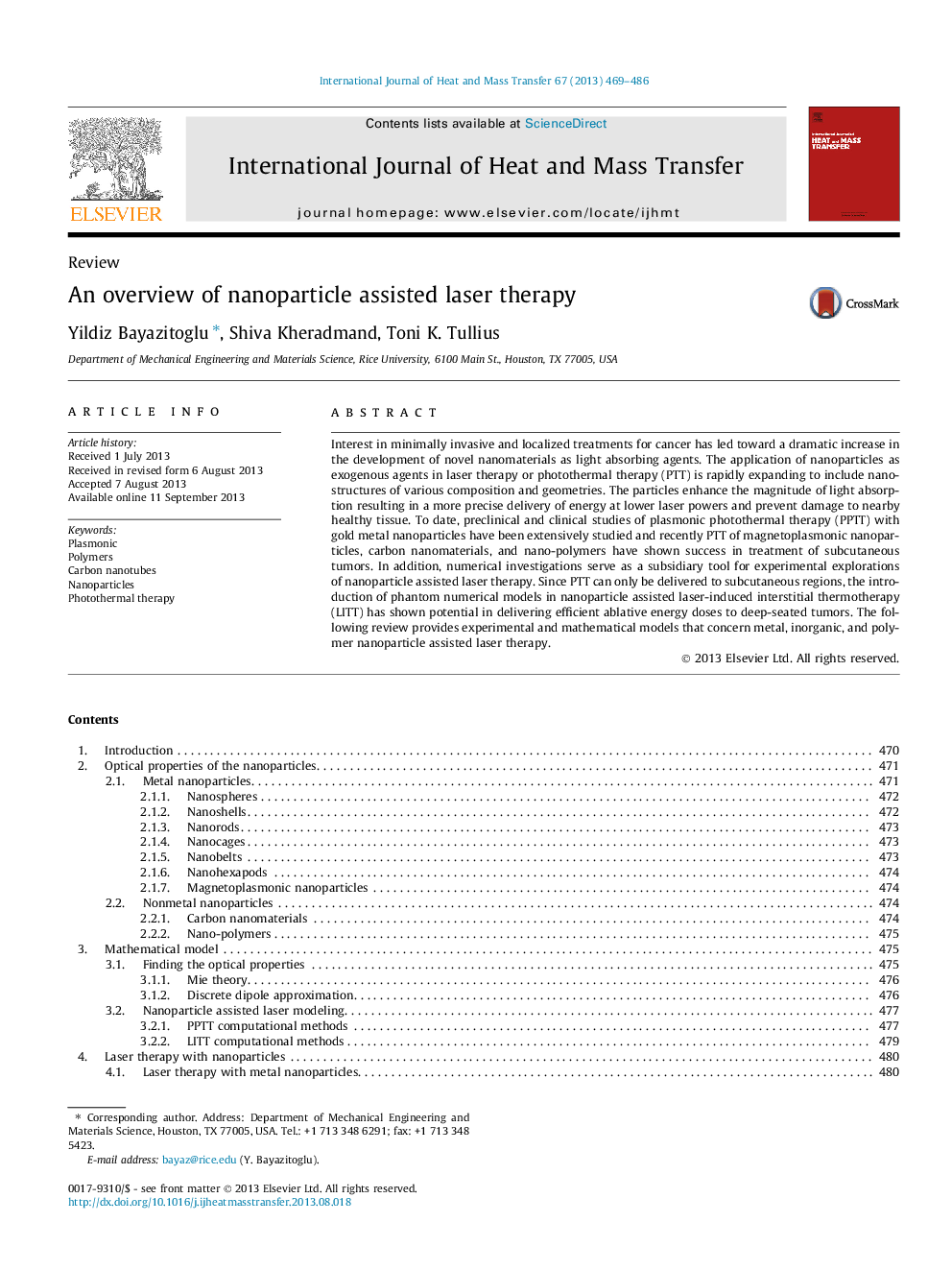| Article ID | Journal | Published Year | Pages | File Type |
|---|---|---|---|---|
| 657919 | International Journal of Heat and Mass Transfer | 2013 | 18 Pages |
Abstract
Interest in minimally invasive and localized treatments for cancer has led toward a dramatic increase in the development of novel nanomaterials as light absorbing agents. The application of nanoparticles as exogenous agents in laser therapy or photothermal therapy (PTT) is rapidly expanding to include nanostructures of various composition and geometries. The particles enhance the magnitude of light absorption resulting in a more precise delivery of energy at lower laser powers and prevent damage to nearby healthy tissue. To date, preclinical and clinical studies of plasmonic photothermal therapy (PPTT) with gold metal nanoparticles have been extensively studied and recently PTT of magnetoplasmonic nanoparticles, carbon nanomaterials, and nano-polymers have shown success in treatment of subcutaneous tumors. In addition, numerical investigations serve as a subsidiary tool for experimental explorations of nanoparticle assisted laser therapy. Since PTT can only be delivered to subcutaneous regions, the introduction of phantom numerical models in nanoparticle assisted laser-induced interstitial thermotherapy (LITT) has shown potential in delivering efficient ablative energy doses to deep-seated tumors. The following review provides experimental and mathematical models that concern metal, inorganic, and polymer nanoparticle assisted laser therapy.
Related Topics
Physical Sciences and Engineering
Chemical Engineering
Fluid Flow and Transfer Processes
Authors
Yildiz Bayazitoglu, Shiva Kheradmand, Toni K. Tullius,
